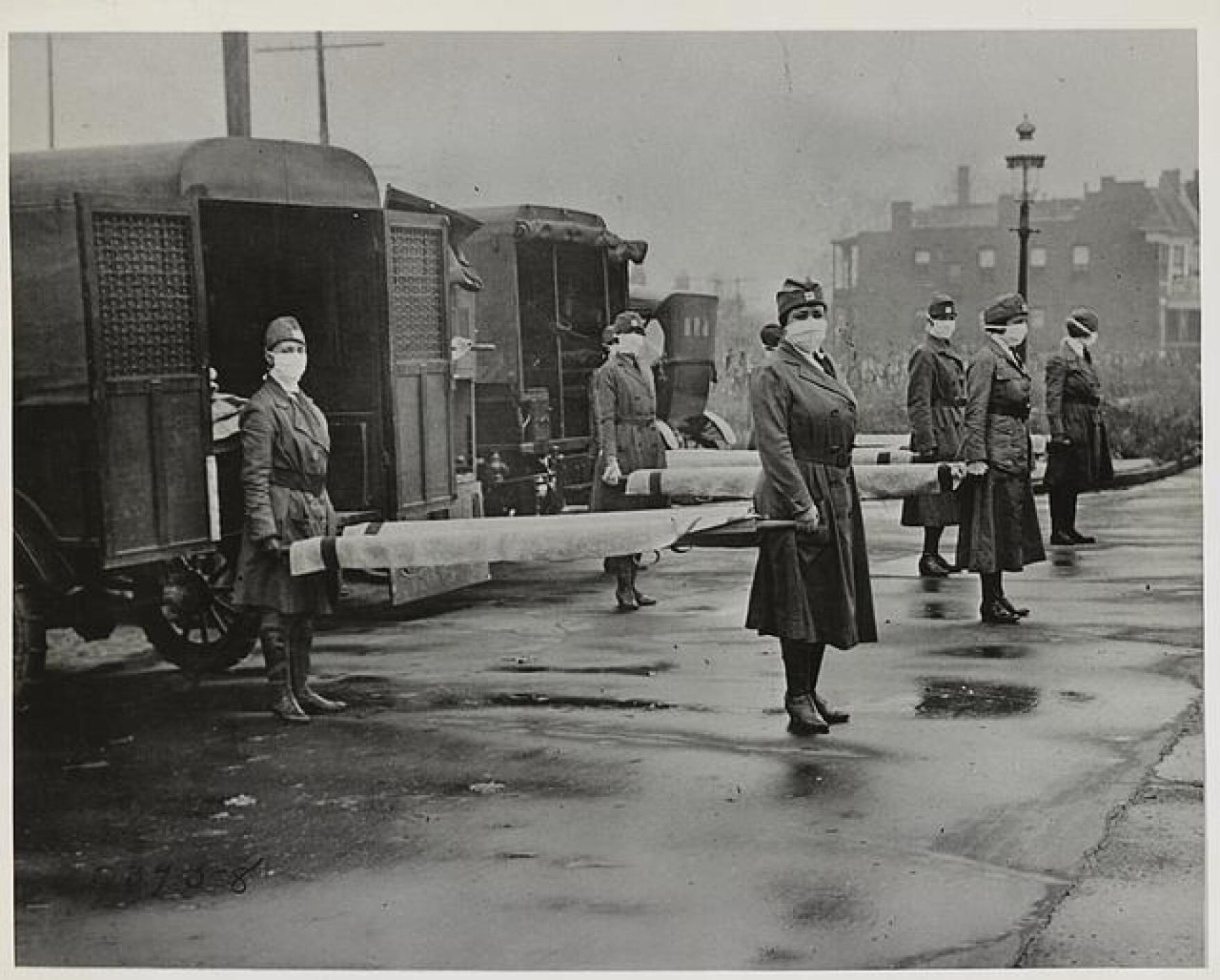
WVXU: Recounting the similarities between the 1918 influenza pandemic and coronavirus
UC expert says the COVID-19 pandemic shares a lot of things with the 1918 flu
COVID-19 first entered the public consciousness about two years ago. It drew a lot of comparisons to another pandemic just over a century earlier. WVXU interviewed Carl Fichtenbaum, MD, of the Division of Infectious Diseases at the UC College of Medicine to learn more about how the COVID-19 outbreak compares with the influenza outbreak of just over 100 years ago.
WVXU reported calling it the 1918 Influenza pandemic is not quite accurate. The CDC says flu season in the United States typically ramps up in October and peaks between December and February. Fichtenbaum says that pandemic wasn't like that.
"It lasted far more than a flu season. It lasted for a couple of years around the world," he says. "There were different waves at different times in different countries."

Carl Fichtenbaum, MD, of the Division of Infectious Diseases at the UC College of Medicine/Photo/Joe Fuqua II/UC Creative + Brand
He says records from several countries show three waves of flu.
"Most likely it did exactly what the coronavirus is doing now, which is that there were changes, there were mutations. There were variants."
Fichtenbaum says the records of the period aren't good enough to demonstrate how the virus changed from wave to wave. He says medicine looked a lot different then.
"There were no vaccines," he says. "There was no specific treatment. There was actually very little in the way of oxygen that was really available for the treatment. There were no intensive care units."
There are some similarities between the influenza and coronavirus pandemics. Fichtenbaum says the human response to the 1918 illness is very familiar.
"Some physicians recognized that this was probably a respiratory illness and that people should be wearing masks. Other people objected to the idea of wearing masks. What a strange phenomena," he says. "And there were people who said you should be separated out if you're sick. Let's put all the sick people together and keep them away from the healthy people."
Lead photo of the St. Louis Red Cross Motor Corps on duty in Oct. 1918 during the influenza epidemic/Library of Congress
Next Lives Here
The University of Cincinnati is classified as a Research 1 institution by the Carnegie Commission and is ranked in the National Science Foundation's Top-35 public research universities. UC's medical, graduate and undergraduate students and faculty investigate problems and innovate solutions with real-world impact. Next Lives Here.
Related Stories
Ohio could soon make breast cancer screenings more affordable
May 9, 2025
The University of Cincinnati Cancer Center's Ann Brown was featured in Local 12 and Cincinnati Enquirer reports on a bill introduced by Rep. Jean Schmidt in the Ohio legislature that seeks to eliminate out of pocket medical expenses such as copays and deductibles associated with supplemental breast cancer screenings.
Preparing students for artificial intelligence in education
May 8, 2025
Laurah Turner, PhD, associate dean for artificial intelligence and educational informatics at the University of Cincinnati's College of Medicine, recently joined the For The Love of EdTech podcast to discuss the usage of personalized learning and AI coaches to enhance educational experiences.
UC lab-on-a-chip devices take public health into home
May 8, 2025
University of Cincinnati engineers created a new device to help doctors diagnose depression and anxiety. The “lab-on-a-chip” device measures the stress hormone cortisol from a patient’s saliva. Knowing if a patient has elevated stress hormones can provide useful diagnostic information even if patients do not report feelings of anxiety, stress or depression in a standard mental health questionnaire.
